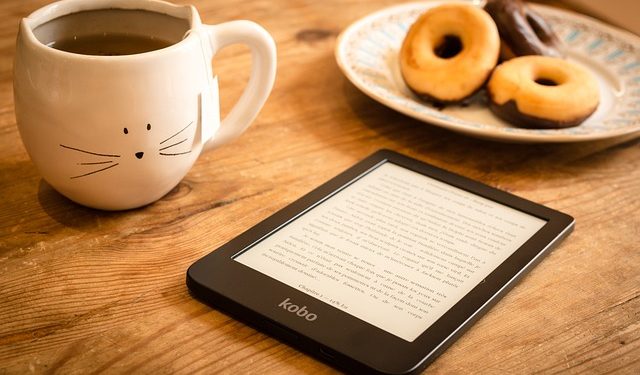Immersed in an ambiance of musty pages and cloaked under the soft glow of a reading lamp lies the traditional book, rich in history, exuding nostalgia. But lurking on the horizon is its sleek, digital rival – The E-Book. With the turn of the century, it has ridden in on the wave of technology, boasting a non-exhaustible library in the palm of your hand. A crossroads manifests, diverging the path of learning into two – one trodden by ink and paper, the other, drawn by pixels and screens. Welcome to the battlefield of parchment against the pixel, the duel between the dog-eared and the digital – the debate between e-books and traditional books. Simplify this intricate showdown as we delve into the pros and cons of each, scrutinizing their prowess in fostering learning. Let the literary showdown begin! Our transition from paper to pixels sprouted a multitude of opinions. Some prefer the romance of flipping through the pages of a traditional paperback, while others cherish the convenience and portability of e-books. In this ever-changing digitized world, it’s essential to comprehend the evolution from ink and parchment to e-ink and screens.
Debunking Myths: A Comparative Study on Learning Efficacy
Often, traditional books are viewed as superior learning tools due to our familiarity and comfortability with the format. However, recent studies may dispel this notion. Findings from a survey conducted by the National Student Clearinghouse revealed that e-books improve learning outcomes in certain student populations. For instance, students with specific learning conditions or who possess certain learning styles may benefit immensely from an e-book’s ability to manipulate text size, font, and backlighting.
- E-books offer learners the flexibility to adjust the font size, color, and others to suit their preference.
- With features like in-built dictionaries and quick fact-check options, they bolster learning efficiency.
- The interactivity of e-books often heightens engagement and knowledge retention.
In-Depth Analysis: How Convenience and Portability Influence Learning
The mantra that ‘knowledge should be at one’s fingertips’ is a reality with e-books. As they can store thousands of books in a single device, e-books save space and allow learners to carry a library in their pockets, making travel or commute time productive for students. Plus, they are environmentally friendly, reducing carbon footprint by saving trees.
Familiarity resides within the realm of traditional books. Their physical presence serves as a constant reminder to delve into that pile of knowledge. Paper books do not require charging and are always ready for a study session, anywhere, anytime.
- New studies propose that reading on paper can help in better comprehension of complex texts.
- Traditional books provide a break from screen time, reducing the chance of digital eye strain.
Making the Choice: Tailored Recommendations for Different Learners
The choice between e-books and traditional books ultimately boils down to personal preference, learning style, and lifestyle. E-books could be great for students constantly on-the-go, researching multitopic subjects, or those intending to learn in dimly lit environments. However, for learners aiming to reduce screen time, indulge in deep reading or those who ascribe to the aesthetics of physical books, traditional books could be an ideal choice. It’s crucial to keep in mind that one format is not inherently superior. Rather, the power of books lies in their content, irrespective of the medium. And so, we reach the end of our journey traversing through the pages of tradition and the screens of innovation, hanging suspended in the conundrum of eBooks vs traditional books. The allure of the tactile dance with paperback, the romance of dog-eared pages, locked in a duel with the pulsing convenience of e-books and their expansive digital library – the choices for learning are paper and pixel, bound by a unified purpose: to educate, to entertain, to embolden. Each platform has its own symphony of arguments, and choosing between the two can feel like picking between two irresistible anthologies. However, perhaps the essence isn’t in choosing one over the other, but rather understanding which mode of reading nurtures your individual learning tree. It’s a personal novel to be written, unique to every reader. After all, the beauty of learning exists inherently in its diversity and adaptability, whether embraced by the rustling whispers of pages or the glowing serenity of an eReader screen.






